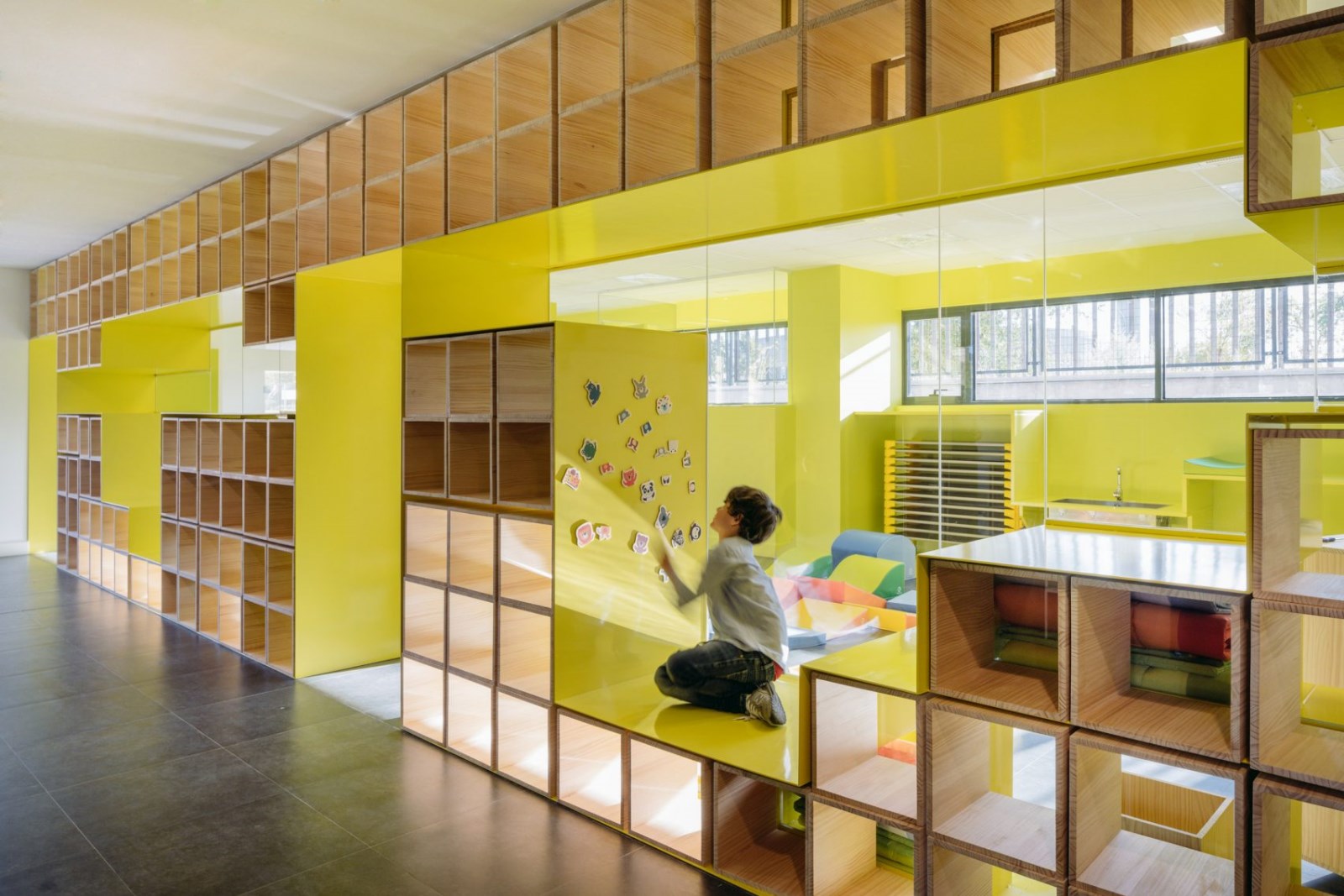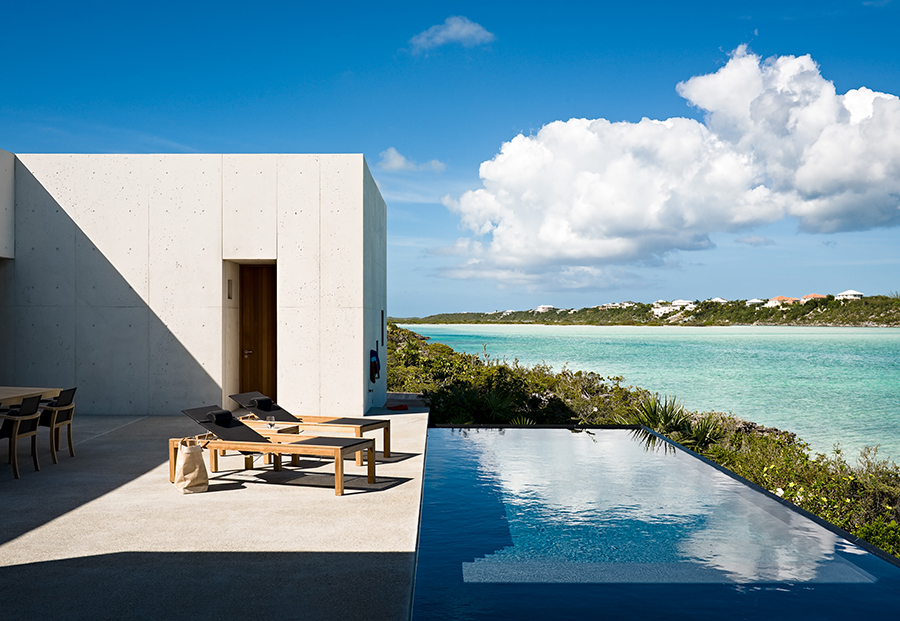Jetavan Sameep Padora - Associates
2016-07-04 02:00
© Edmund Sumner
c.埃德蒙·萨姆纳


架构师提供的文本描述。在佛教神话中,杰特瓦纳是佛陀最重要的空间建筑之一的名字,其字面意思是:耶塔之林,土地捐赠给僧伽,以建立一座寺院。萨米尔·索马亚(Samir Somaiya)附近的马哈拉施特拉邦(Maharashtra)农村制糖厂的老板提供给佛学中心的地点是茂密的森林,这是一种田园式的小树林,这具有符号学意义。
Text description provided by the architects. In Buddhist mythology Jetvana is the name of one the Buddha’s most important spatial edifice which when literally translated means: the grove of Jeta, land donated to the sangha for founding a monastery. It was of semiotic significance that the site offered by Samir Somaiya owner of the neighboring sugar factory in rural Maharashtra for the Buddhist Learning Center was thickly forested, an idyllic grove of sorts.


这个学院被设计成一个精神上的人。
The institute was programmed as a spiritual & skill development center for the native Dalit Baudh Ambedkar Buddhist community. The mandate of Jetavana is to provide a spiritual anchor for their practice of Buddhist thought through meditation and yoga while also imparting training and skill development for members of the community.
© Edmund Sumner
c.埃德蒙·萨姆纳


在不伤害一棵树的任务下,大规模的项目被分成6座建筑,每座建筑都位于茂密种植之间的空隙中。在设计过程中,两个庭院作为纽带出现,将这些建筑缝合成一个共同的身份。
With the mandate of not harming a single tree on site the sizable program was split up into 6 buildings each situated in gaps between the heavy planting. Through the design process two courtyards emerged as links suturing these buildings into a common identity.
Floor Plan


此外,通过反演屋顶轮廓与中心谷在中间和上升边缘,内部空间是视觉连接的叶子外面。因此,室内空间也是外部环境的一个函数,它的轻盈掩盖了现场沉重的程序。屋顶与墙壁的分离,同时提供急需的交叉通风,也使建筑物向庭院倾斜。
Further by inverting the roof profile with a center valley in the middle and rising edges the interior spaces were visually connected with the foliage outside. The interior spaces hence are also a function of the outside setting, with a lightness that belies the heavy programs on site. The separation of the roof from the walls while providing much needed cross ventilation also scales the building towards the courtyard.
© Edmund Sumner
c.埃德蒙·萨姆纳


我们与亨纳沙拉(Hunnarshala)密切合作,这是一家致力于复兴和复兴当地建筑传统的机构,我们整理了一种材料味觉,它使用的是夯实的玄武岩石尘承重墙。石屑是附近一处采石场的废物,与垃圾飞灰混合在一起,这是邻近工厂的副产品,过去有人付钱把垃圾飞灰运走。旧船的木料再利用为屋面结构,底座为泥卷结构,具有很好的隔热性能。屋顶本身是用粘土屋顶瓷砖完成的,这些瓷砖是旧的被拆除建筑物的残余。
Working closely with Hunnarshala, an institution looking to revive and resuscitate local building traditions we collated a material palate that uses rammed loadbearing walls of basalt stone dust. The stone dust, which is waste from a nearby quarry, is mixed with waste fly ash, a by-product from the adjoining factory that in the past was paying people to cart the waste fly ash away. Repurposed wood from old shipping vessels act as roof structure, with the understructure made of mud rolls, which are also great insulation. The roof itself is finished with clay roof tiles, remnants from older demolished buildings.


地板是一种传统的泥巴和粪便地板,由当地社区成员做,这是众所周知的防腐性能。
The flooring is a traditional mud and dung floor done by members of the local community, which is known to have antiseptic properties.
© Edmund Sumner
c.埃德蒙·萨姆纳


我们对Jetavan项目的方法是扩展区域范式的概念,同时将其与定义地方的普遍的“形象”分离开来。施工过程还提出了一种方法,着眼于基于当地重要性的进一步施工技术,而不一定是本地使用的,而是适合当地情况的。
Our approach to the Jetavan project looks to extend the idea of the regional paradigm whilst separating it from the pervasive ‘image’ of what defines the local. The construction process also sets out an approach that looks to further construction techniques based on local materiality not necessarily used natively but appropriate for it’s context.
© Edmund Sumner
c.埃德蒙·萨姆纳








































Architects Sameep Padora & Associates
Location Maharashtra, India
Category Monastery
Design Team Aparna Dhareshwar, Kriti Veerappan, Karan Bhat
Photographs Edmund Sumner
Manufacturers Loading...































